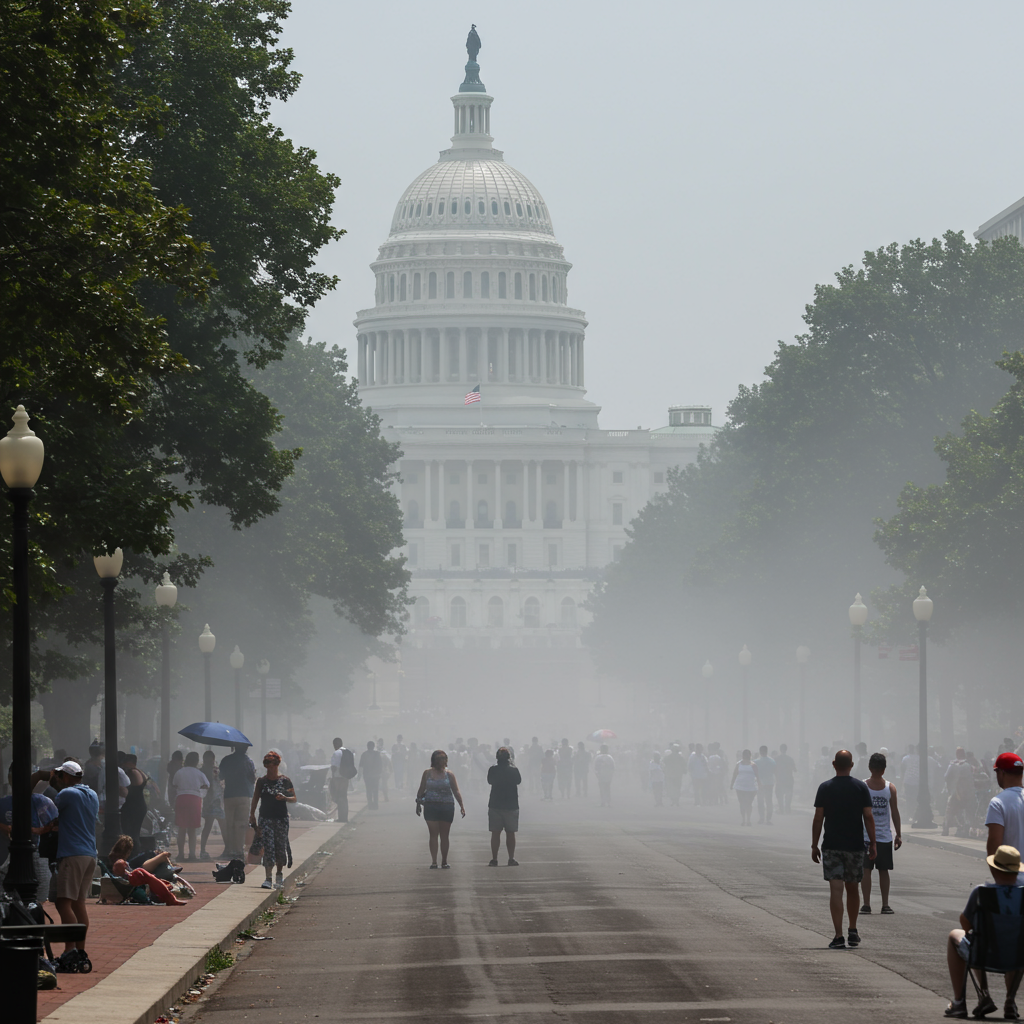A sweeping legislative package championed as a cornerstone of President Trump’s domestic agenda has successfully navigated the U.S. house of Representatives, but it now faces a formidable challenge in the senate. This extensive bill, exceeding 1,000 pages, represents a complex negotiation designed to reconcile the diverse and often competing demands within the republican party. From fiscal conservatives pushing for significant spending cuts to lawmakers from high-tax states seeking relief on the State and Local Tax (SALT) deduction cap, the bill attempts to bridge ideological divides. Its passage through the House, secured by a narrow 215-214 vote, underscores the intricate balance required and hints at the difficult path ahead in the upper chamber. This legislation aims to enact generational policy shifts by permanently lowering taxes and substantially reducing government spending, partially offset by significant reforms to safety net programs.
House Passage and the Path to the Senate
Following intense negotiations, including critical meetings at the White House, the Republican-backed bill achieved House approval. House Speaker Mike Johnson hailed the legislation as “truly nation-shaping.” However, this success is merely the first hurdle. The bill’s arrival in the Senate immediately highlights internal Republican disagreements. Key components that were essential for gathering enough votes in the House are already drawing reservations and potential opposition from senators with different priorities or constituencies. Navigating these internal conflicts will be crucial for any hope of the bill’s ultimate passage.
Core Pillars of the Proposed Legislation
The bill encompasses a wide array of policy changes impacting taxation, social programs, border security, clean energy, and education. Understanding these core components reveals the ambition and complexity of the Republican proposal.
Extending and Expanding Tax Cuts
A central element of the bill is the extension and expansion of tax reductions. The legislation proposes approximately $3.8 trillion in tax cuts, primarily by making permanent the individual tax cuts originally enacted in the 2017 Trump tax law. These cuts are currently set to expire at the end of the year, meaning without this bill, most American households would see a tax increase. This provision is designed to prevent a future tax burden on families and individuals.
Beyond extending the 2017 framework, the bill includes specific new tax provisions reflecting recent campaign pledges. These include temporarily eliminating taxes on overtime earnings between 2026 and 2028 and allowing deductions for interest paid on car loans, specifically targeting vehicles manufactured in the United States. The child tax credit would also see changes, increasing to $2,500 until 2028 for those with Social Security numbers before reverting to $2,000 adjusted for inflation. The standard deduction would increase through 2028, and an additional $4,000 deduction is introduced for individuals over 65, though this benefit would phase out at higher income levels, intended to address the taxation of Social Security benefits.
Addressing the Contentious SALT Cap
A particularly divisive issue within the GOP, and crucial for winning votes from high-tax states, is the State and Local Tax (SALT) deduction cap. The 2017 tax law capped the amount taxpayers can deduct for state and local taxes at $10,000. This bill proposes raising this limit significantly to $40,000 for married couples earning up to $500,000. This change is vital for Republican lawmakers representing constituents in states with high property and income taxes, offering relief not present under current law.
Major Reforms to Safety Net Programs
To achieve significant spending reductions, the bill targets large federal programs like Medicaid and the Supplemental Nutrition Assistance Program (SNAP). Republicans argue these changes will yield “hundreds of billions in necessary savings” and combat “waste, fraud, and abuse.”
For Medicaid, the health care program for low-income, elderly, and disabled Americans, a major proposed change is the introduction of work requirements. Starting at the end of 2026, childless adults without disabilities would need to work 80 hours per month to qualify for benefits. The bill also proposes changing the enrollment period from annual to every six months and implementing more frequent income and residency checks. These provisions have been highly contentious during legislative negotiations.
Similarly, the bill proposes changes to SNAP, which provides food assistance. It would increase the financial contribution required from states for the program and impose work requirements on able-bodied enrollees without dependents. Independent analysis suggests these changes could lead to many people losing access to benefits, fueling internal and external opposition.
Raising the Debt Ceiling
A critical component for maintaining government operations is the inclusion of a provision to raise the nation’s debt limit by $4 trillion. While this action does not authorize new spending, it allows the government to finance spending already approved by Congress. This step is deemed necessary to prevent a potential U.S. default on its obligations, a scenario Treasury Secretary Janet Yellen has warned could occur as early as August without legislative action.
Scaling Back Clean Energy Credits
To help offset the cost of the proposed tax cuts and fund other initiatives, the bill calls for dramatic reductions to clean energy tax credits established by the Inflation Reduction Act. This includes eliminating the popular $7,500 credit for purchasing electric vehicles. Additionally, credits aimed at incentivizing the production of or investment in renewable energy sources like solar and wind would be phased out under the proposal. This represents a significant policy shift away from promoting green energy development through tax incentives.
Investments in Border Security and Immigration Changes
The bill allocates substantial funding towards enhancing border security. This includes $46.5 billion earmarked for the completion of President Trump’s border wall project. An additional $5 billion is allocated for Customs and Border Protection facilities, alongside over $6 billion dedicated to hiring and retaining agents and officers. Funds are also directed towards upgrading screening and surveillance technology along the border.
In a novel approach, the bill proposes introducing fees for various immigration services for the first time. These include a $1,000 fee for asylum applications, a $550 charge for work authorization applications (renewable every six months), a $3,500 fee for sponsoring unaccompanied children without legal status, a $1,000 fee for undocumented individuals paroled into the U.S., and a $500 fee for those applying for temporary protected status.
Overhauling the Student Loan System
Significant changes are proposed for the student loan system, aiming to cut $330 billion in costs. The bill would eliminate several existing repayment options, including the income-based SAVE program from the Biden administration. These would be replaced by a new standard repayment plan and a Republican-named “Repayment Assistance Plan.” The proposal also seeks to modify the Pell Grant program, increasing the definition of full-time enrollment for maximum aid to 30 credit hours per year and requiring a minimum of half-time enrollment (15 credit hours per year) to qualify for any aid. Analysis suggests these changes could reduce financial assistance for many students.
Navigating the Senate Landscape
The bill’s journey through the Senate promises to be significantly more challenging than its House passage. The Senate requires a higher threshold for most legislation, and the bill contains elements that divide the Republican caucus. While the bill is expected to potentially utilize reconciliation procedures to bypass a Democratic filibuster, even this process requires near-unanimous Republican support, which is not guaranteed. Senators from states with different economic profiles or political priorities may object to specific provisions, such as the extent of Medicaid and SNAP cuts, the changes to clean energy credits, or even the specifics of the SALT cap relief.
The internal divisions stem from the difficulty of balancing conflicting goals: achieving deep spending cuts while providing significant tax relief, addressing concerns of high-tax states without alienating deficit hawks, and enacting conservative social reforms like work requirements. The intense political environment adds another layer of complexity. As proponents like President Trump and Speaker Johnson urge swift Senate action, the reality of crafting a bill that can garner sufficient votes in the upper chamber becomes apparent. The outcome will depend heavily on the ability of Republican leadership to unify the caucus and potentially negotiate changes palatable to hesitant members, while likely facing unified opposition from Democrats who view the bill as harmful to middle- and lower-income Americans and detrimental to clean energy efforts.
Frequently Asked Questions
What are the major provisions of the Trump/Republican House tax & spending bill?
The extensive bill passed by the House includes a permanent extension of the 2017 individual tax cuts, new temporary tax breaks (like overtime and car loan deductions), and an increase in the child tax credit. It also reforms Medicaid and SNAP with new work requirements and eligibility checks, raises the national debt ceiling by $4 trillion, drastically cuts clean energy tax credits, allocates substantial funding for border security (including the wall), introduces new fees for various immigration services, and overhauls the student loan system by eliminating current plans and changing Pell Grant eligibility.
Why is the Republican tax and spending bill facing challenges in the Senate?
The bill faces significant hurdles in the Senate primarily due to internal Republican divisions and the legislative process. While it may use reconciliation to bypass a filibuster, it still needs almost complete GOP unity, which is challenged by disagreements over contentious provisions. Senators may object to the depth of cuts to social programs like Medicaid and SNAP, the rollback of clean energy incentives, or the specific details of the SALT cap relief, which may not satisfy all members from high-tax states. These competing demands make forging a unified path difficult.
What are the next steps for the Republican tax and spending bill in Congress?
After passing the House, the bill now moves to the Senate. Senate leadership must decide how to proceed, likely considering the reconciliation process to overcome potential Democratic opposition. However, the bill is expected to undergo significant changes in the Senate to address the concerns of Republican senators and attempt to consolidate support. This process will involve intense negotiation and potential amendments. The final version passed by the Senate (if any) would then need to be reconciled with the House version, requiring further negotiation between the chambers to produce identical legislation that could be sent to the President.




